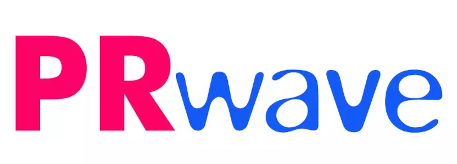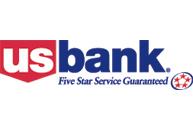Market
U.S. Bank is the principal subsidiary of U.S. Bancorp, the sixth-largest financial holding company in the United States. U.S. Bank serves more than 11 million customers, principally through more than 2,300 full-service branch offices in its 24-state primary footprint; additional specialized loan and trust offices across the country; more than 4,500 ATMs; telephone banking; and Internet banking. From the Midwest to the West Coast, from the Great Plains to the Pacific Northwest, U.S. Bank operates in an industry that is increasingly competitive — among banks and nonbanks — and in an era of accelerating consolidation and convergence.
{viewonly=registered,special}Achievements
In an industry in which competitors distinguish themselves with the service they offer, only U.S. Bank guarantees outstanding customer service by every business line and every employee for every transaction every day. The exclusive
U.S. Bank Five Star Service Guarantee ensures specific performance standards that reflect customer expectations for quality, responsiveness, accuracy, and availability. The goal of the Five Star Service Guarantee is to bring customers the highest level of service they have ever experienced from a financial institution. Each department and line of business at U.S. Bank has a customized guarantee for its external and internal customers — more than 80 guarantees in all. Each quarter, a select group of employees who exemplify outstanding service qualify for induction into the U.S. Bank Circle of Service Excellence. The inductees are honored with a number of recognition events and financial rewards.
U.S. Bank is a leader in assuring that its financial services and communications are easily accessible to the Hispanic population in its market areas. The U.S. Bank Hispanic banking program centers around three core objectives: to increase the number of Spanish-speaking employees in the branches and throughout the company, to become even more involved in Hispanic organizations locally and nationally, and to develop and communicate “best in class” financial products and services that meet the distinct needs of Hispanics. U.S. Bank partners with the Consulate of Mexico, the United States Hispanic Chamber of Commerce, the National Council of La Rasa, and the Latin Business Association, among other organizations. Along with other materials that it publishes and distributes in Spanish, U.S. Bank has launched usbank.com/espanol, a Spanish Internet site that includes product information and the capability to apply for accounts online.
History
Today’s U.S. Bank was forged during the 1990s from the combination of several excellent major regional banks, including Star Bank, Firstar, Mercantile, First Bank System, U.S. Bank, and Colorado National Bank. Those banks, in turn, had grown from the mergers of numerous smaller banks throughout the years. In the eastern part of the franchise, U.S. Bank traces some of its earliest roots to 1853 when Farmers and Millers Bank in Milwaukee opened its doors, growing into the First National Bank of Milwaukee and eventually becoming First Wisconsin and ultimately Firstar. In St. Louis, State Savings Institution, with just $8,500 in capital and one teller, opened in St. Louis in 1855, later to become part of the Mercantile Trust Company, the forerunner of Mercantile Bancorporation. In Cincinnati, The First National Bank of Cincinnati opened for business in 1863 under National Charter #24 with the boom of Civil War cannons firing just across the Ohio, but it survived through many more decades to grow into Star Bank. About this same time, The First National Bank of St. Paul was chartered in 1864. A year later, The First National Bank of Minneapolis received its charter. These two First Nationals formed a holding company in early 1929, known as First Bank Stock Corporation, and they kept that name until 1968 when they became First Bank System. Across the Rocky Mountains in 1891, several prominent business leaders received a charter for The United States National Bank of Portland, Oregon, a de novo banking company.
From their largely unremarkable beginnings, these banks thrived as independent entities, each growing into a respected force (and usually the largest commercial bank) in their respective marketplaces. As opportunities arose, each participated in in-market mergers and acquisitions during the early decades of the 20th century and in more widespread expansions during the 1980s and 1990s — including the 1993 transaction that brought Colorado National Bank in Denver into the First Bank System, and West One Bancorp of Boise, Idaho, coming into the original U.S. Bancorp in 1995.
Of particular note, in 1902 the U.S. National Bank of Portland was merged into the Ainsworth National Bank of Portland, but kept the U.S. National Bank name. The decision turned out to be an auspicious one, as a 1913 federal law prohibited other banks from using “United States” in their names from that time forward. U.S. National was among the first banks to form a bank holding company — called U.S. Bancorp.
Since 1988 alone, mergers with and acquisitions of more than 50 banks, large and small, have helped form today’s U.S. Bank. During the 1990s, Star, Firstar, and Mercantile merged to become the new Firstar, and First Bank System and
U.S. Bancorp combined as U.S. Bancorp. On February 27, 2001, Firstar and U.S. Bancorp became today’s new U.S. Bancorp
Articole recomandate:
Cum transformi o conferință de business într-o experiență imersivă de brand
Asociația ANAIS - Unele măști rămân
Case study: Nu ești singur, vom găsi drumul împreună!
“Scrisori pe frunze” pentru Liv.52 de la Himalaya
Ce isi doresc copiii din centre de plasament si cum a ilustrat Gabi Toma dorintele lor
Case study: Comunicare pentru schimbare - Patrula de Reciclare
Case study campania vALLuntar realizata de Editura ALL
Siemens Race 2012 - Case study
Pages: 1 2




